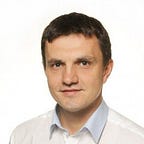How Do Healthcare Applications Help Physicians to Prevent Burnout?
Let’s discuss how physician burnout applications can help to lower stress, while supporting the work of specialists.
In 2021, 69% of physicians reported burnout. In 2018, their number was 40%. For doctors, fatigue, stress, and depression are becoming serious problems that lead to suicide in 22% of cases. The COVID-19 pandemic has only added fuel to the fire because doctors have even more responsibilities and work now. Healthcare software development companies have found a way to relieve doctors and reduce the risk of professional burnout, which is healthcare mobile applications.
What is Physician Burnout?
Professional burnout is a state of moral and physical exhaustion that doctors experience due to stress, great responsibility, or working overtime.
As of 2018, 54% of physicians worked more than 51 hours a week. Doctors have to see more than 20 patients a day, listen to their complaints, examine them, prescribe treatment, and document conclusions. At the same time, a doctor must remain attentive because they can not afford to make mistakes.
Medscape has identified common causes of physician burnout:
- in 55% of cases, these are bureaucratic tasks such as scheduling or paperwork;
- for 33% of physicians, a depressed state is caused by working overtime;
- 32% are depressed because of disrespect from the administration and colleagues;
- for 30% of doctors, the computerization of work and the introduction of EHRs become a challenge;
- 22% feel like a cog in the wheel;
- 17% are unsettled by disrespect on the part of patients.
Routine tasks and relationships with patients can be partially simplified and improved with the help of healthcare mobile apps.
Telemedicine Platforms
Healthcare mobile applications integrated with IoT sensors allow patients to independently collect vital signs. A doctor receives regularly updated statistics on a patient’s condition and uses the data to adjust the treatment.
Patient information is stored in the EHR, there are templates for electronic prescriptions and medical reports in the system. Based on the results of a consultation, an invoice is formed and issued. Thus, telemedicine platforms partially relieve medical staff from routine tasks and paperwork.
Electronic Health Records
An electronic health record (EHR) stores digital records of a patient’s health status (contact details, vaccination information, chronic and past diseases, allergies, medical history, etc.). Physicians consider these data when diagnosing disease and prescribing treatment. Doctors make fewer mistakes thanks to an optimized system.
When doctors have difficulty finding the optimal treatment, they can share data with colleagues. A specialist consults with other doctors to quickly prescribe the correct medication. The opportunity to receive advice and expertise from others is meaningful support.
Healthcare Communication Platforms
Medical institutions use communication platforms to work together. Clinics and hospitals can communicate with each other and coordinate to treat complex diseases or fight a pandemic. Thanks to the possibility of consultation, patients receive effective treatment faster.
Doctor Appointment Applications
The Association of American Medical Colleges (AAMC) warns of a growing shortage of doctors, from 17,000 to 77,000 depending on the specialty. Since there are not enough experts, doctors are forced to work on a tight schedule. Doctor appointment apps are designed to balance the difficult working regime and relieve the burden on specialists.
A patient enters the portal, finds the right specialist, and selects a convenient date and time in the calendar. The patient enters personal data, complaints, and other information into the booking form. The system records the appointment in the patient’s and doctor’s calendars and sends reminders. The information that the patient entered during the application process is transferred to the EHR. Thus, the doctor does not manually enter the data and has more time for the patient.
The administrator of the clinic ensures that the workload is distributed evenly among the employees to prevent a situation when one doctor works while the rest have free time. A moderate workload also protects medical personnel from professional burnout.
Build Digital Services that Support Comfortable Work Environments
The work schedules, the climate in the team and the nature of the doctor-patient relationship all affect medical burnout. Especially during the pandemic, when doctors are under increased stress. Healthcare mobile apps can be used to support the relief of specialists and simplify their work.
If you are looking for a physician burnout app, you should contact a software development company that specialises in healthcare technology. Their experts will research into the business problems, help to determine the digital service type, and design and implement the necessary functionality. A team of experts will devise ways customers can take care of the safety of patient data and ensure that doctors, nurses and other medical professionals have comfortable working conditions.
Special thanks to Tremis Skeete, Executive Editor at Product Coalition for the valuable input which contributed to the editing of this article.
